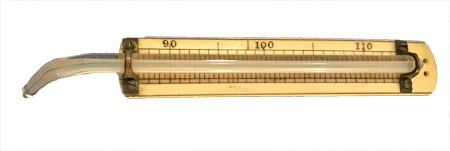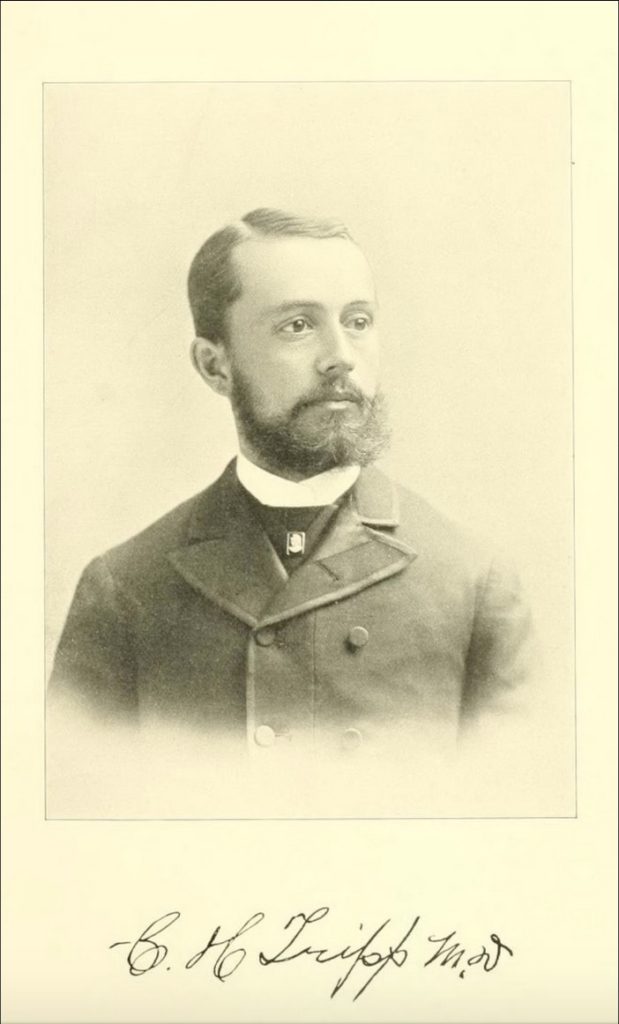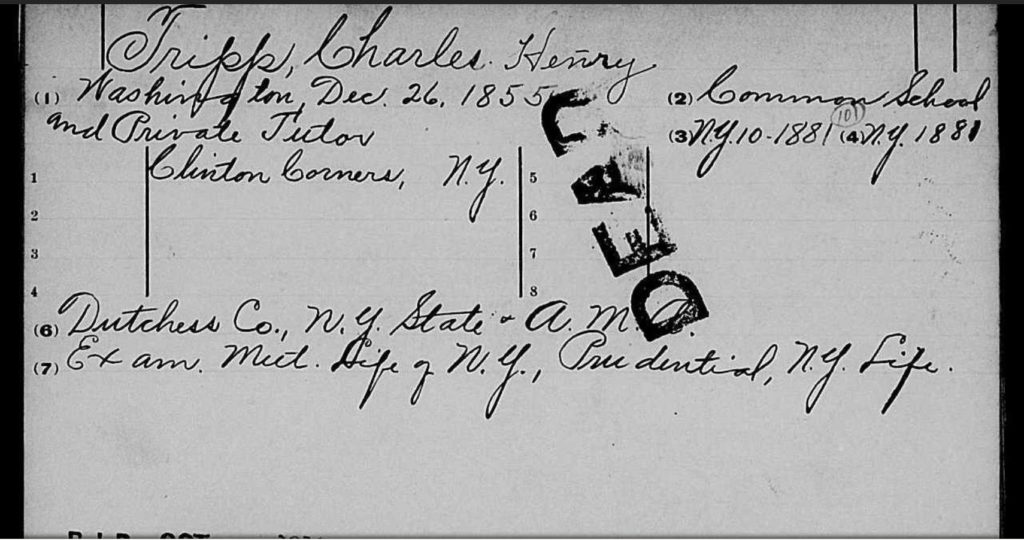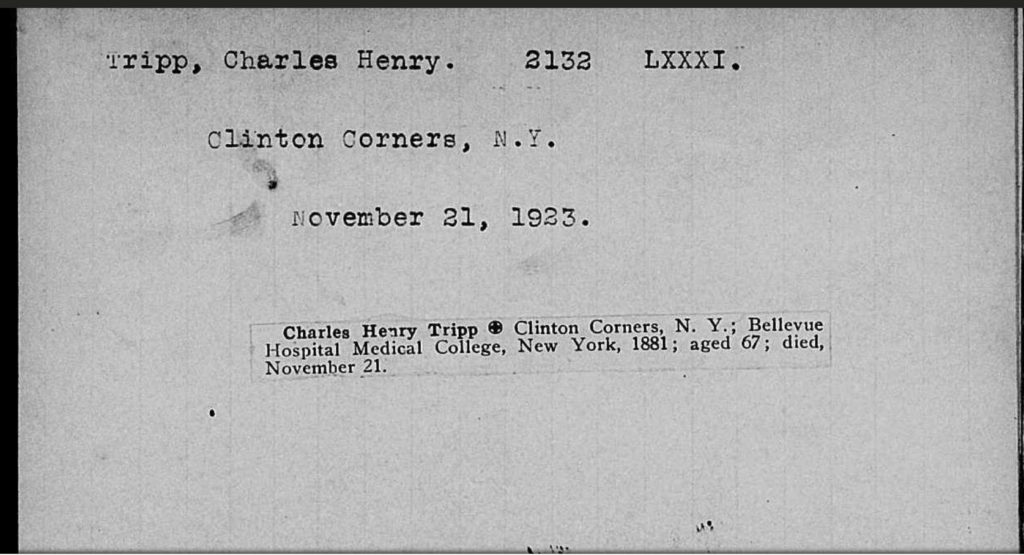Thermometer Made by Tiemann, c.1864 – 1886
Used by Charles Henry Tripp, M.D.
RARE, INTACT THERMOMETER IN ORIGINAL LABELED CASE

These are rarely seen, due to the fact that in most the glass was easily broken. While the mercury in the glass is long gone, the remainder is completely intact, as is the original case with Tiemann’s 67 Chatham label. It is, of course, an axillary thermometer, designed for the glass tip to be placed in the axilla (armpit) where it would register a patient’s temperature. Axillary temperatures are usually about one degree less (cooler) than ones placed in the mouth.
Clinical thermometers for measuring body temperature were introduced in the 17th century. But, they did not become an integral part of the physician’s armamentarium until after the American Civil War. Early clinical thermometers were thin tubes of glass containing mercury, mounted to a rectangular piece of ivory or wood, as is shown above. The calibration, or graduated scale, is engraved into the mount.
Another online source is in agreement with their widespread lack of use during the Civil War. Alfred Jay Bollet says this in his book Civil War Medicine: Challenges and Triumphs:
“Civil War physicians are . . .criticized for their failure to use even the few thermometers they had. Yet they were by no means behind their contemporaries in Europe in this regard. Thermometers were cumbersome to use, as they were usually placed in the armpit for a long period of time, and so were just “not used very much.” Body temperature was ascertained only during the investigation of unusual diseases, such as in Confederate physician Joseph Jones’s study of “traumatic tetanus” published during the war. Not until 1867 did German professor of medicine Carl Wünderlich introduce thermometry to bedside medicine. The profound impact of his work is summarized by the expression: “He found fever a disease and left it a symptom.” After Wünderlich’s report, thermometer use became widespread among American physicians.”
(Despite the fact that on his webpage (http://civilwarrx.blogspot.com/2013/05/civil-war-thermometers.html) he shows the same type of thermometer in the same type of case, the label in the case shown above suggests post-Civil War usage, possibly as late as 1886.)
CHARLES HENRY TRIPP, M.D.
1855 – 1923

This item was from the estate of Dr. Charles H. Tripp. Tripp was born in Washington, Dutchess county, New York on December 26, 1855, the son of Seneca Tripp, a well-to-do farmer. Charles was initially educated in the common school, then studied Greek and Latin under a private tutor to in preparation for a career in medicine. He entered Bellevue Hospital College of Medicine in 1878 and graduated in 1881. He returned to the town of Millbrook, in his native county, and practiced there a few years before setting up a permanently in Clinton Corners, where he had a large and lucrative practice. For three years, he served as health officer for the town of Clinton, and was also examining physician for the New York Life and Mutual Benefit Life Insurance Companies. He died on November 21, 1923.
His file cards from the AMA Database of Deceased Physicians are shown below.


